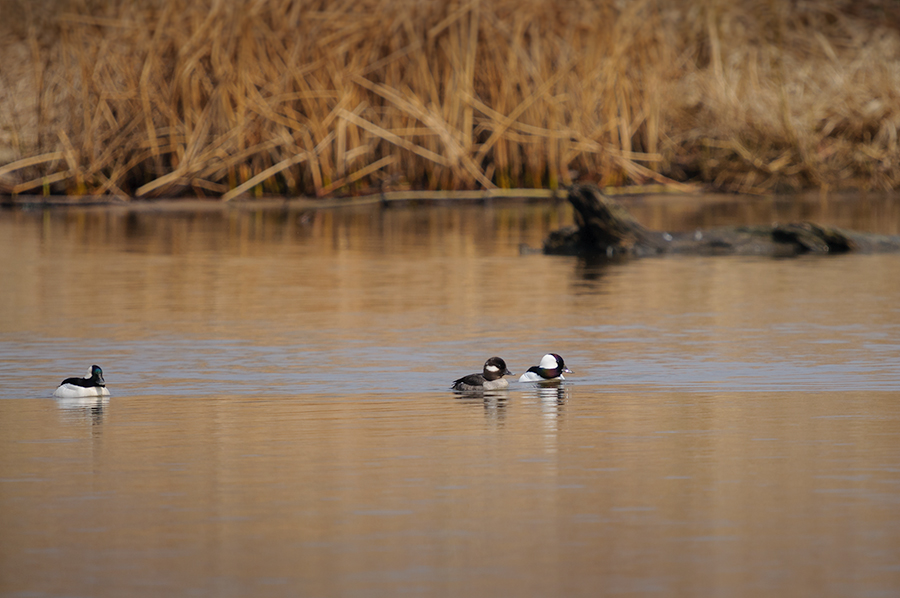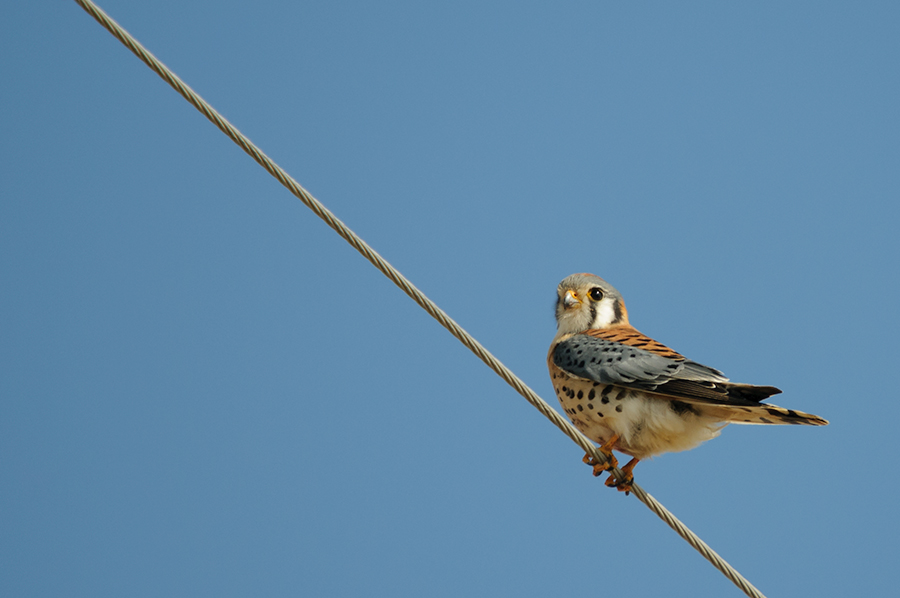
A big area of precipitation is still moving through the Midwest while I’m writing these lines. It dominated the weather today but I had to go to Mud Lake at the Mississippi to look for the young Great Horned Owl this evening. Last year April 25th was the last day I have seen a young owl still in the nest before it started the so called “branch hopping”. It means it still stays close to the nest but moves around in the trees near the nest. The development of this year’s owlet was very similar and my suspicion got confirmed today when I saw the young owl sitting on the edge of the big nest. It is ready to leave the nest and I caught the first moment of this important step.
I tell you, it was not an easy task to make this image. The rain was more a mist at that time but nevertheless the equipment got wet, slowly but surely. The light? Well, there wasn’t much and the only way to get something out of the “gray weather soup” was to use the Better Beamer flash extender for some fill flash and color improvement. Having the owlet sitting at the edge of the nest allowed to get closer to the tree and at the same time to shorten the distance because of a steeper shooting angle. I still struggle to use the flash extender. Too many times I don’t like how the eyes of the animal turn out. They look sometimes like a couple LED’s…:-( Before I went out today I read a few pages in my favorite book about wildlife photography, Moose Peterson’s “Captured”, and there was the hint I was looking for. It’s called “feathering the light”, a technique that uses the outer edges of the flash beam, means the soft part of the light is used instead of the whole beam. Not that I mastered it today but I got a little closer to an acceptable result. More practice is needed… However, seeing the young Great Horned Owl in almost full size for the first time this year was an exciting moment that was worth the effort to deal with the “lovely weather”…
















